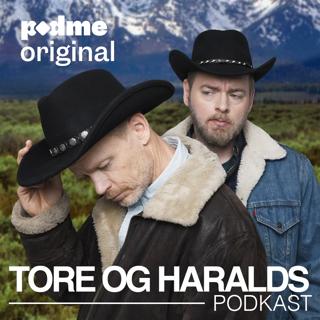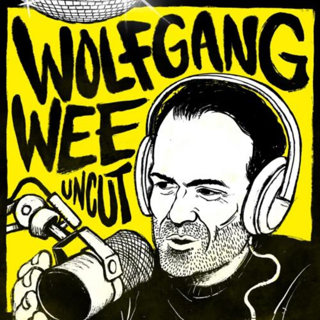
59: The Milkshake Murder & Blood Spatter Analysis
Hate ads? The entire LGTC catalog is available ad-free on Patreon! Robert Kissel appeared to have it all. He was a high-powered investment banker living in Hong Kong with his wife and children, making millions of dollars a year. Then, in late 2003, he did something out of character. The reliable workaholic missed an important conference call. His coworkers were immediately suspicious. What could have happened to Robert? Then, Warren Horinek was drunk. Super drunk. He and his wife Bonnie had just spent the evening drinking at TGIFriday’s. They’d hadn’t been home long when Warren called 911. Through slurs, he told the dispatcher that his wife had been shot. But had she? Police, the medical examiner and the district attorney all agreed that the scene looked like a suicide. But Bonnie’s friends and family thought differently. And now for a note about our process. For each episode, Kristin reads a bunch of articles, then spits them back out in her very limited vocabulary. Brandi copies and pastes from the best sources on the web. And sometimes Wikipedia. (No shade, Wikipedia. We love you.) We owe a huge debt of gratitude to the real experts who covered these cases. In this episode, Kristin pulled from: “A bloody injustice,” by Dave Mann, Texas Observer “The defense calls Terry Laber,” Texas Center for Community Journalism “CNN explores Warren Horinek Case,” Texas Observer “The Warren Horinek Case,” waco-criminal-attorney.com In this episode, Brandi pulled from: “Born to Win” episode Behind Mansion Walls “Nancy Kissel: The Hong Kong Milkshake Murder” by Anthony Bruno, TruTV.com “Kissels Of Death” by Steve Fishman, New York Magazine “Murder of Robert Kissel” wikipedia.org
13 Mar 20191h 39min

58: The Sleepwalker & the McDonald’s Strip Search
Hate ads? The entire LGTC catalog is available ad-free on Patreon! Scott Falater killed his wife — that much we know is true. He stabbed Yarmila dozens of times, then held her underwater. Afterward, he hid the murder weapon and his bloody clothes. When police arrived on the scene, Scott was dazed. He said he wasn’t sure what had happened. He didn’t remember a thing. He would never have chosen to kill his wife. So he must have committed the murder while he was sleepwalking. Right? Then Kristin tells us about a phone call that a self-proclaimed police officer made to a McDonalds in Mount Washington, Kentucky. A man who called himself “Officer Scott” told assistant manager Donna Summers that he was investigating a theft. A McDonald’s employee had stolen a customer’s purse. He described the suspect, and Donna offered a name. It had to be Louise Ogborn, the 18-year-old high school senior. Donna brought Louise into the office and followed Officer Scott’s increasingly odd instructions. And now for a note about our process. For each episode, Kristin reads a bunch of articles, then spits them back out in her very limited vocabulary. Brandi copies and pastes from the best sources on the web. And sometimes Wikipedia. (No shade, Wikipedia. We love you.) We owe a huge debt of gratitude to the real experts who covered these cases. In this episode, Kristin pulled from: “A hoax most cruel,” The Courier-Journal by Andrew Wolfson “Appeals court upholds $6.1 million strip-search verdict against McDonald’s,” The Courier-Journal “Ogborn awarded $6.1 million in suit against McDonald’s,” The Courier-Journal “Ogborn, first set of lawyers involved in fee dispute,” The Courier-Journal “Acquittal in hoax call that led to sex assault,” MSNBC “Strip-search case closed?” ABC News “Judge: Company must pay legal fees,” The Courier-Journal “McDonald’s didn’t warn workers, suit says,” The Courier-Journal “Ex-McDonald’s worker wins lawsuit over strip search,” Associated Press “McDonald’s Corporation v Ogborn,” findlaw.com “Strip search phone call scam,” Wikipedia Clip of 20/20 episode on YouTube In this episode, Brandi pulled from: “Walking Terror” episode Forensic Files “The Big Sleep” by Paul Rubin, Phoenix New Times “A Killer Sleep Disorder” by Paul Rubin, Phoenix New Times “Husband Admits He Killed His Wife —In His Sleep” Desert News “Sleepwalking Given As Defense by Man In Killing of Wife” Associated Press, The New York Times “Woman Stabbed, Drowned by ‘Sleepwalking’ Husband” by Joe Enea, ABC 15 News “‘Sleepwalker’ Guilty of Murder” by CBSNews.com Staff, CBS News
6 Mar 20191h 51min

57: The Seaman Family & Elizabeth Freeman’s Quest for Freedom
Hate ads? The entire LGTC catalog is available ad-free on Patreon! Nancy and Bob Seaman had a long and unhappy marriage. They got married in 1973, and by 2004, they were sleeping in different areas of the house and communicating exclusively through angry post-it notes. It looked like they were heading for divorce. But then Bob went missing. It didn’t take long for police to discover his body in the back of Nancy’s Ford Explorer. There’s no question that Nancy murdered Bob, but that’s where the certainty ends. Nancy claimed he’d been abusive for the entirety of their marriage. The couple’s youngest son, Greg, backed her up. But their oldest son, Jeff didn’t. Who was the jury to believe? Was Nancy a cold-blooded killer? Or was she an abused spouse who lashed out in self defense? Elizabeth Freeman was one hell of a woman. She was born into slavery in the mid-1700s. But thanks to a lot of gumption, the newly created Massachusetts Constitution, and a kick ass legal team, Elizabeth became the first enslaved woman to successfully sue for her freedom. Her lawyers argued that Massachusetts’ new constitution, which championed freedom and equality, effectively abolished slavery. Just nine years after her lawsuit, the federal census recorded no slaves living in Massachusetts. And now for a note about our process. For each episode, Kristin reads a bunch of articles, then spits them back out in her very limited vocabulary. Brandi copies and pastes from the best sources on the web. And sometimes Wikipedia. (No shade, Wikipedia. We love you.) We owe a huge debt of gratitude to the real experts who covered these cases. In this episode, Kristin pulled from: “Freedom Suits of the Pre-Constitutional Era,” www.mass.gov “Elizabeth Freeman,” PBS “Jury Decides in Favor of Elizabeth “Mum Bett” Freeman,” www.massmoments.org “Elizabeth Freeman,” www.womenhistoryblog.com “Slavery in New England,” section of the book Bentley’s MIscellany, Volume 34 An episode of “Finding Your Roots” Wikipedia entries for Elizabeth Freeman, Quock Walker, Theodore Sedgwick, the Sheffield Declaration, and the Colonel John Ashley House In this episode, Brandi pulled from: “Nancy Seaman” episode Snapped “The judge who sentenced Nancy Seaman for murder now wants to set her free” by Hanna Rappleye, NBC News “Nancy Seaman” wikipedia.org
27 Feb 20191h 28min

56: Fugitive Slave Anthony Burns & the Power of Suggestion (Part 2)
Hate ads? The entire LGTC catalog is available ad-free on Patreon! Anthony Burns was born into slavery in Stafford County, Virginia. Despite laws that forbade him to do so, he learned to write and read. He became a preacher. As he got older, there was one thing he wanted more than anything: Freedom. So he boarded a ship to Boston and escaped. For a while, Anthony lived as a free man. But his former “owner,” Colonel Charles F. Suttle Douchelord the Third, wanted Anthony back. Unfortunately, Charles had the law on his side. Then Brandi finally ends the suspense by wrapping up her two-part series on the Beatrice Six. In last week’s episode, she told us about 68-year-old widow Helen Wilson, who was discovered raped and murdered in her apartment in Beatrice, Nebraska. Police initially suspected Bruce Allen Smith, but a blood test ruled him out. The case grew cold. But then, a hog farmer and former police officer named Burdette Searcey stepped in. He was determined to solve the crime — by any means necessary. And now for a note about our process. For each episode, Kristin reads a bunch of articles, then spits them back out in her very limited vocabulary. Brandi copies and pastes from the best sources on the web. And sometimes Wikipedia. (No shade, Wikipedia. We love you.) We owe a huge debt of gratitude to the real experts who covered these cases. In this episode, Kristin pulled from: “Anthony Burns Trial of 1854,” www.famous-trials.com “Anthony Burns and the Fugitive Slave Act,” www.longroadtojustice.org “Anthony Burns,” PBS The book, “Boston slave riot, and trial of Anthony Burns” Wikipedia entries for Anthony Burns, Twelfth Baptist Church, Boston Vigilance Committee, Fugitive Slave Act of 185, and Franklin Pierce In this episode, Brandi pulled from: “Presumed Guilty Part Four: Pointing Fingers” by Catharine Huddle, Lincoln Journal Star “Presumed Guilty Part Five: Threat of Death” by Joe Duggan, Lincoln Journal Star “Presumed Guilty Part Six: The Trial” by Catharine Huddle, Lincoln Journal Star “Presumed Guilty Part Seven: DNA Changes Everything” by Joe Duggan, Lincoln Journal Star “Presumed Guilty Part Eight: A New Investigation” by Joe Duggan, Lincoln Journal Star “Memories of a Murder” by Rachel Aviv, The New Yorker “Even in 1989, forensics didn’t point to men and women who went to prison for crime” by Joe Duggan, Omaha World-Herald InnocenceProject.org
20 Feb 20191h 42min

55: The Power of Suggestion & Con Man Clark Rockefeller
Hate ads? The entire LGTC catalog is available ad-free on Patreon! In this episode, Brandi gives us part one of a two-part series that begins with the rape and murder of 68-year-old widow Helen Wilson. When investigators discovered Helen’s body, they were baffled. She had no enemies. Who in the tight-knit city of Beatrice, Nebraska, could have killed her? Investigators had a pretty solid lead, but blood analysis ruled out their top suspect. After that, the case went cold… that is, until a retired police officer and full-time hog farmer picked up the case. Then Kristin tells us about con man Clark Rockefeller. Things seemed relatively normal in July of 2008, when Clark, his daughter, and a social worker walked through a posh area of Boston. But when a black SUV limo pulled up beside them, Clark shoved the social worker out of the way and pulled his daughter into the vehicle. The limo sped off, leaving the social worker behind. Boston police rushed to Clark’s ex-wife, Sandra Boss. If they were going to catch him, they needed all the information they could get. Therein lay the problem. Clark Rockefeller didn’t have an ID. He didn’t have a social security number. In fact, Clark Rockefeller wasn’t Clark Rockefeller at all. And now for a note about our process. For each episode, Kristin reads a bunch of articles, then spits them back out in her very limited vocabulary. Brandi copies and pastes from the best sources on the web. And sometimes Wikipedia. (No shade, Wikipedia. We love you.) We owe a huge debt of gratitude to the real experts who covered these cases. In this episode, Kristin pulled from: “The Man in the Rockefeller Suit,” by Mark Seal for Vanity Fair “Lawyer says ‘Rockefeller’ won’t get fair trial,” The Boston Globe. “‘Rockefeller’ wins false name battle,” Associated Press “11 jurors chosen in kidnap trial,” Boston Globe “Rich deception,” Associated Press “‘Rockefeller’ defense claims delusions,” Associated Press “Ready-Made Rockefeller,” New York Times Newspapers.com |Wikipedia.com In this episode, Brandi pulled from: “Presumed Guilty Part one: Murder in Apartment 4” by Joe Duggan, Lincoln Journal Star “Presumed Guilty Part two: The Search For a Killer” by Catharine Huddle, Lincoln Journal Star “Presumed Guilty Part three: The Break” by Joe Duggan, Lincoln Journal Star “Presumed Guilty Part four: Pointing Fingers” by Catharine Huddle, Lincoln Journal Star “Memories of a Murder” by Rachel Aviv, The New Yorker “Even in 1989, forensics didn’t point to men and women who went to prison for crime” by Joe Duggan, Omaha World-Herald
13 Feb 20192h 26min

54: The So-Called Kayak Killer & the Girl Scout Camp Murders
Hate ads? The entire LGTC catalog is available ad-free on Patreon! Angelika Graswald and her fiance, Vincent Viafore, loved going on adventures. On a Sunday in April of 2015, they strapped two kayaks to the top of Vincent’s Jeep and headed for the Hudson River. They planned to kayak over to Pollepel Island, where they’d see the Bannerman Castle ruins. But there were a few big obstacles in their way. The water was cold. Their kayaks weren’t suited for the river. Vincent didn’t wear a life vest. On top of all that, the weather that evening was predicted to take a turn for the worst. On their way back across the river, Vincent’s kayak capsized. Later, Angelika’s statements to detectives had people asking whether this was a tragic accident or a calculated murder. Then Brandi tells us the heartbreaking story of three violent murders at an Oklahoma girl scout camp. In the summer of 1977, Doris Milner, 10, Lori Farmer, 8, and Michelle Guse, 9, shared a tent. Everything seemed normal on the night of June 12, but early the next morning, a camp counselor discovered a grizzly scene. The girls’ dead bodies had been piled together on a trail. The crime stunned and terrified the nation. Police soon captured a man named Gene Leroy Hart. But did they have the right guy? And now for a note about our process. For each episode, Kristin reads a bunch of articles, then spits them back out in her very limited vocabulary. Brandi copies and pastes from the best sources on the web. And sometimes Wikipedia. (No shade, Wikipedia. We love you.) We owe a huge debt of gratitude to the real experts who covered these cases. In this episode, Kristin pulled from: “Murder by kayak?” episode of 20/20 “Woman pleads guilty in fiance’s kayak death on Hudson River,” New York Times “‘Who’s Miranda?’ Suspect in kayak killing didn’t understand her rights, lawyer says,” New York Times “A kayak trip on the Hudson, ending in death and an arrest,” New York Times “Murder charge for woman who said fiance’s kayak capsized in Hudson River,” New York Times “Woman convicted in fiance’s death entitled to portion of his life insurance,” CBS News In this episode, Brandi pulled from: “Girl Scout Murders | June 13, 1977” by Tim Stanley, Tulsa World “Girl Scout murders in Oklahoma remain unsolved 40 years after tragedy” by Juliana Keeping and Brianna Bailey, The Oklahoman “Gene Leroy Hart Is Found Innocent In Sex Slayings of Three Girl Scouts” by Jim Bradshaw, The Washington Post “40 Years After 3 Girl Scouts Were Killed at Camp, Police Hope DNA Will Reveal Their Killer” by Jeff Truesdell and Christine Pelisek, People Magazine “The Troubling, Still-Unsolved Case of the 1977 Oklahoma Girl Scout Murders” by Cheryl Eddy, Gizmodo
6 Feb 20191h 48min

53: Drug Dealer Jesse James Hollywood & Andrea Yates
Hate ads? The entire LGTC catalog is available ad-free on Patreon! Jesse James Hollywood was a suburban Los Angeles pot dealer. At just 20 years old, he owned his own home, pulled in a grand a week, and had a couple of his old little league friends to sell his drugs and do his bidding. Jesse thought he was hot shit. So when one of his henchmen refused to fall in line, Jesse decided to send him a message. He kidnapped the man’s 15-year-old brother, Nicholas Markowitz, and later learned from a family lawyer that the justice system doesn’t go easy on kidnappers. What Jesse did next landed him on the FBI’s Most Wanted List. Then Kristin really bums us out with the story of Andrea Yates, a deeply troubled Texas mother who drowned her five children in her bathtub. Andrea’s story shocked and disturbed the nation, but it also raised important questions about Andrea’s mental state. By the time she murdered her children, she’d been hospitalized, she’d attempted suicide, she’d withheld food from her children, and she’d been prescribed antipsychotic drugs. Both the prosecution and the defense agreed that Andrea was mentally ill, but would the jury find her not guilty by reason of insanity? And now for a note about our process. For each episode, Kristin reads a bunch of articles, then spits them back out in her very limited vocabulary. Brandi copies and pastes from the best sources on the web. And sometimes Wikipedia. (No shade, Wikipedia. We love you.) We owe a huge debt of gratitude to the real experts who covered these cases. In this episode, Kristin pulled from: “Profile of Andrea Yates,” Thoughtco.com “Andrea Yates,” episode of Mugshots “Where is Andrea Yates’ Husband Now?” People.com “Andrea Yates,” Wikipedia Newspapers.com “Defense derides psychiatrist as a witness for hire,” Los Angeles Times “Andrea Yates case turns on trail error,” Los Angeles Times In this episode, Brandi pulled from: “The Last Ride of Jesse James Hollywood” by Jesse Katz, Los Angeles Magazine “The Real Story Behind Alpha Dog” episode Dateline “Defendant Denies Killing Teen” by Sue Fox, Los Angeles Times “Prosecutor Okayed for Jesse James Hollywood Trial” by Chris Meagher, Santa Barbara Independent “Witness Rundown in Hollywood Trial” by Amy Silverstein and Chris Meagher, Santa Barbara Independent “Jesse James Hollywood Tells His Story” by Chris Meagher, Santa Barbara Independent “Hollywood Jury Deliberating” by Chris Meagher, Santa Barbara Independent “Verdict In: Hollywood Guilty of Murder and Kidnapping” by Chris Meagher, Santa Barbara Independent “The Murder of Nicholas Markowitz” wikipedia.org “Jesse James Hollywood” wikipedia.org “Joshua Lynn” wikipedia.org
30 Jan 20192h 14min

52: A Celebrity Stalker & the Blended Family
Hate ads? The entire LGTC catalog is available ad-free on Patreon! Rebecca Schaeffer was at the beginning of a promising acting career. She was gorgeous, talented, and dedicated. She landed the cover of Seventeen magazine, nabbed several movie roles, a recurring role on a soap opera, and most notably, a role on the CBS sitcom, “My Sister Sam.” But as Rebecca’s fame grew, an unstable 19-year-old named Robert John Bardo became obsessed with her. What transpired would help criminalize stalking in the United States. Then Brandi wraps up her horrifying series on Johnson County crimes with a story she first read when she was 10 years old. Seriously. Ten. This is why we’re weird. It starts innocently enough. When Ed Hobson met Sueanne at a local skating rink, he was smitten. He asked her out. She turned him down. He asked her out again. She turned him down again. Then Sueanne spotted Ed’s high-end car and decided she’d give him a chance. Eventually, the two married. The pair had children from previous marriages, so Ed brought his 13-year-old son Chris and Sueanne brought her 13-year-old daughter Suzanne into the home. Everything went great. Until it didn’t. And now for a note about our process. For each episode, Kristin reads a bunch of articles, then spits them back out in her very limited vocabulary. Brandi copies and pastes from the best sources on the web. And sometimes Wikipedia. (No shade, Wikipedia. We love you.) We owe a huge debt of gratitude to the real experts who covered these cases. In this episode, Kristin pulled from: “Suspect in actress’ murder spirited to LA,” Associated Press “Sanity issue raised by Bardo Lawyer,” Los Angeles Times “Police directed to evidence in actress’ death,” Los angeles Times “Robert John Bardo,” Wikipedia.com “Rebecca Schaeffer,” Wikipedia.com “The shocking 1983 crime that raised awareness about stalking,” Gizmodo “A rising star lives to shine again after a near fatal knifing,” People magazine “Six years ago, Rebecca Schaeffer was fatally shot,” Entertainment Weekly “It took this up-and-coming actress’s tragic death to change anti-stalking laws,” Ranker … and several other articles from newspapers.com In this episode, Brandi pulled from: “Family Affairs” by Andy Hoffman “Hit Mom” episode Evil Stepmothers “Stepmother of 13 year old boy forced to dig his own grave charged with murder” UPI “Sueanne Hobson wanted her 13-year-old stepson killed by Christmas” by Toni Cardarella, UPI “A jury Friday convicted Sueanne Hobson of first degree murder” by Michele DiGirolamo, UPI “Love Never Dies” by Ben Paynter, The Pitch
23 Jan 20192h 20min





















